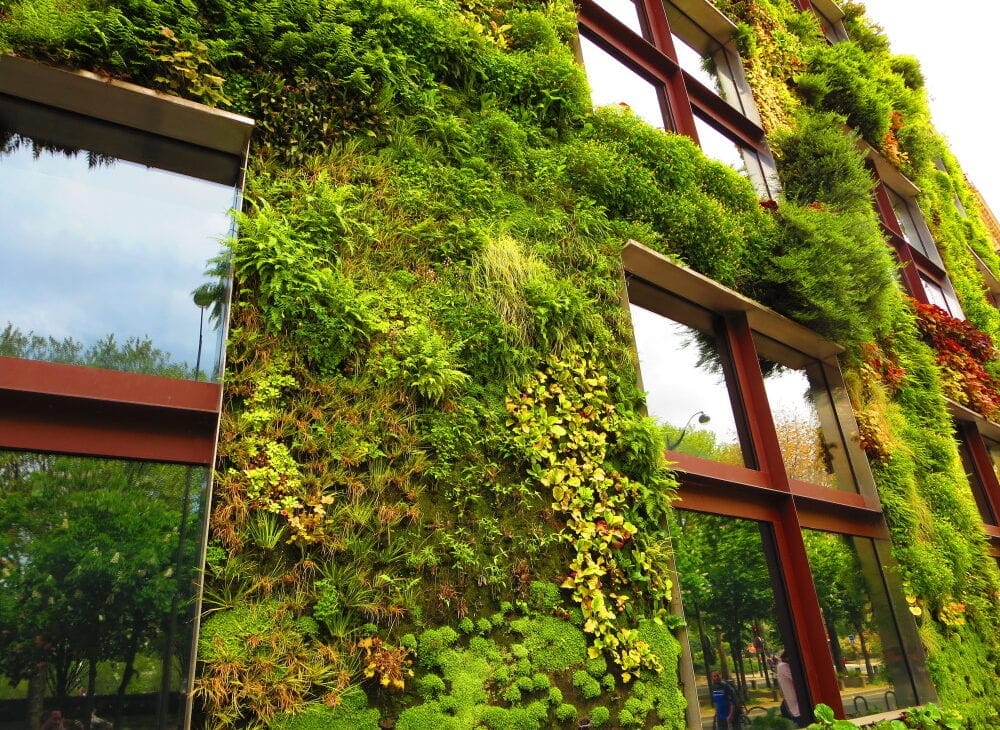Green architecture translates into humans living harmoniously within the environment by adapting and living peacefully within the ecology. This is a technique for designing sustainable green buildings giving priority to environment in terms of materials used and the space occupied. Green architects therefore work with the key concepts of creating energy efficient, eco-friendly buildings. The basis for the construction model or key concept in green architecture is natural ecology.
The goal is creation of sustainable building models designs which safeguard the natural environment, adapt to integrate with the existing environment in terms of space and energy, water and resource use. The designs have therefore to take into consideration site survey and design, material use, to harmonize with the existing ecology by including all environmental friendly details.

Principles of Green Architecture
Architects are designing models which lessen the negative impacts of construction on our environment guided by the following the principles:-
Energy efficiency isincorporated through designs to reduce energy consumption including the requirements for energy, exploitation of sustainable alternative energy sources like as wind and solar. The buildings incorporate natural air flow pattern and daytime lighting which result in reducing the lifetime costs of heating, lighting, AC and other electric power.
Water efficiency protects quality and reduces water consumption. The architectural design of building ensures to harvest, use, purify and re-use water. Not just this but also preserves the quality of surrounding water systems and makes use of water recycling mechanisms.
Land use efficiency encourages site development keeping in mind the surrounding environment and local materials incorporating roof gardens, earth shelters and extensive landscaping around and throughout the building.
Paradigm shift
As the world rethink sustainable environment, attention is drawn to rethink architecture because construction projects are responsible for more than 50% adverse impact on environmental, the destruction of natural systems and also contributes to 10% of the total global emissions per annum. Therefore, green architecture uses green designs to lessen these adverse environmental impacts like preventing degradation of the construction site, conservation of resources, improved water and air quality, and the protection of ecosystems and biodiversity all by rethinking building design brought about by paradigm shift in the following:-
Material efficiency:- Useof materials in construction is a huge concern where green architecture’s role emerges in the creating designs that inspire sustainable construction by optimizing the use of materials used keeping in mind conservation of resources and energy efficiency.
Lowering costs:- Green architectural design facilitates both materials use and construction techniques to half the cost of operational and construction, contributing to their cost-effectiveness by using renewable plant products and recycling metal & stone. The result is reduction of long-term maintenance costs.
Reduction wastage:- Of water, energy, and materials used during and even after construction by the building occupants through the integration eco-friendly waste management systems like compost bins on the site itself. The building design recycles water and saves energy to reduce wastage of resources respectively.
Renewable energy technologies: Green architecturedesign incorporates implementation of renewable energy technologies which use wind power, solar energy and biogas. The green architects tailor building designs keeping in mind geographical locations to tune in full exploitation of renewable energy available like the seasonal changes in the sun’s position and regional energy sources such as wind and biomass.
Environmental quality indoors: Commercial building are designed to incorporate features of comfort with emphasis on temperature control, proper ventilation and using products which do not emit toxic compounds or gases thus ensuring improved indoor environments.
Criteria for Green Architects

Green architects have the basic standard degrees in architectural design and practice along with added qualifications for green or environmental knowledge. Their competence is judge not just by their skill and experience but their ability to draft building designs which are sustainable to eco-friendly norms right from the initial conceptualization at consultation stage during site visit to liaison with builders and actual delivery keeping in mind environmentally friendly minute detail.
Materials Used
Green architecture is basically resource management using natural materials which have good thermal, energy and water efficiency to save construction costs. The materials selection criteria are what will be its long-term effects on the environment. The following list is a guide to the types of materials suitable for green building:
Recycled products- areused on account of their resource efficiency including insulation using from recycled newspapers and cardboards or recycled denim, recycled stone or recycled steel which uses fewer chemicals and energy to process and also requires fewer virgin resources to be produced.
Resource efficient are materials which require less energy to produce but also minimize resource wastage and greenhouse gas emissions like sustainable concrete made from crushed glass and wood chips or slag.
Natural or renewable materials can be obtained from sustainably managed and naturally occurring sources like wood and solar tiles.
Refurbished, salvaged or remanufactured materials from disposal or generating landfill waste like plastic ceilings.
Reusable and recyclable materials were previously used, and are in good condition to be used in new construction including old plumbing or old doors.
Locally available minimize transportation costs, greenhouse gas emission during transportation.
Non-toxic materials are substantially low in carcinogen elements, irritants or reproductive toxicants.
Green Buildings in India
In India, green buildings are Suzlon One Earth, Pune, designed by architect Christopher Charles, one of the India’s first buildings to be LEED (Leadership in Energy and Environmental Design) certified with the concept ‘Office in the garden.’
Rajiv Gandhi International Airport (RGIA), Hyderabad consumes less water, electricity and conserves natural resources and has reduced the carbon footprint by 3331 tons.
CII- Sohrabji Godrej Green Business Centre, Hyderabad is made up of only recycled materials and doesn’t emit waste but recycles it within.
Infosys Limited, Mysore leads to 40 % less energy consumption by sustainable site development, water savings, energy efficiency, materials selection and indoor environmental quality.
Infinity Benchmark, Kolkata is furnished with Co2 monitor sensors, humidification controls, waste recycling system and rainwater harvesting.





















